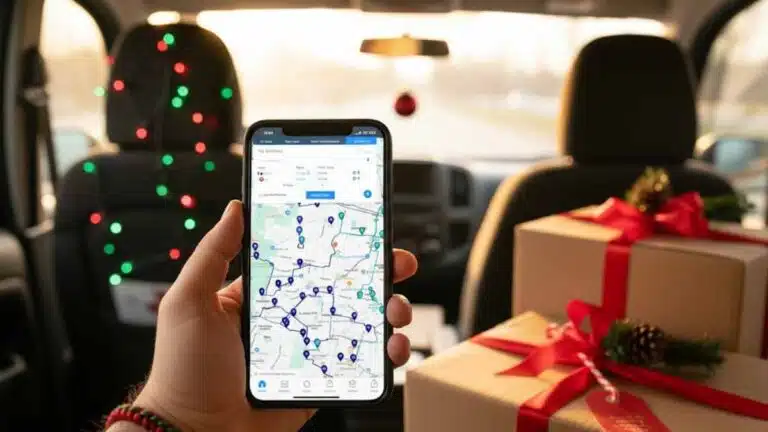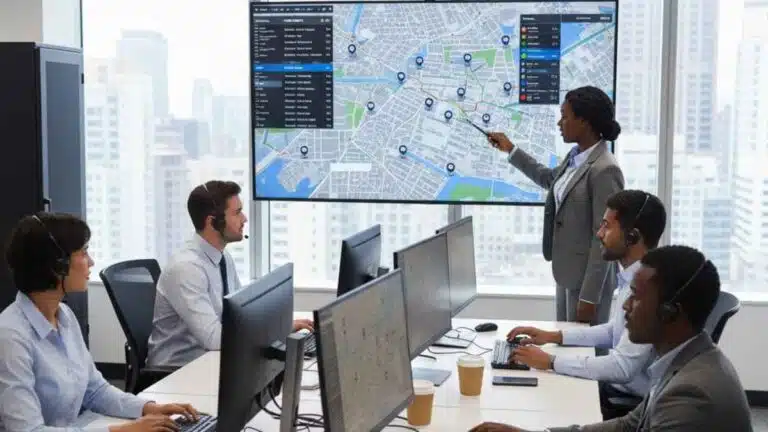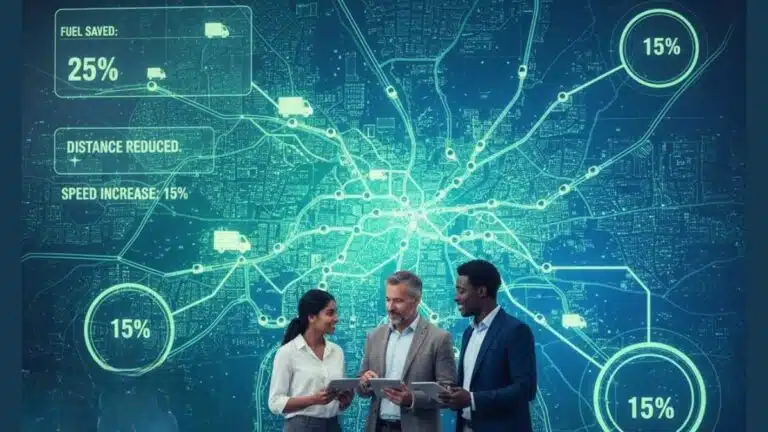You might think your business already offers real-time tracking, but customers aren’t impressed if it’s just a static map or a late ETA.
Your customers might be staring at the static map or trying to zoom in, but there is no movement. Or they might be looking for an SMS with an ETA; meanwhile, an email was sent, and they missed it.
Real-time tracking needs to be efficient so that customers can actually benefit from it.
Let’s look at the ten common mistakes businesses make when promising customers that they provide real-time tracking, but lack basic features.
1. Static maps instead of live maps during real-time tracking
When customers are promised real-time tracking, they want the driver moving with updated location data. Your real-time tracking system can’t be a screenshot of a route.
The bar has been set high thanks to industry experts like Uber Eats, and customers now demand this service.
Customers hold their mobile devices in their hands, glaring at the screen as they see the delivery driver moving closer to their homes.
What is the point of sending a tracking link if you can’t track vehicles?
ALSO READ: Real-time tracking vs Static Updates
2. Overly broad delivery windows
A narrow delivery window wins. Customers can plan their days and ensure they are at the arranged delivery address.
However, some businesses think giving customers an eight-hour delivery window is sufficient. Gold delivery, on the other hand, looks like a three-hour window.
Using real-time tracking technology, the system can automatically calculate when the driver will reach which location.
Some businesses try to extend the delivery window to avoid disappointing customers, allowing for traffic jams, roadblocks, and wet/snowy roads in winter. However, route optimization software can help with this.
Giving customers precision will attract more business.
3. ETAs sent too late for efficient real-time tracking
On delivery day, customers want an estimated time of arrival. They want to know when they can expect their parcel.
The best practice is to send customers a link with the ETA the evening before delivery. However, when drivers pack their trucks, many send them the morning of delivery.
Sending an ETA five minutes before drop-off is also not helpful. It is too late and serves no purpose. So, sending the ETAs the evening before drop-off is best to help customers plan better.
Using software like Locate2u will help estimate the ETA well in advance.
NOW READ: How to Improve Delivery Efficiency with Accurate ETA Estimates
4. ETAs via email instead of SMS/push notifications
Who keeps track of their emails anyway? People sit and glance at their phones for hours every day.
SMS and push notifications are the best options for ensuring customers don’t miss important information. An SMS or push notification pops up on a phone screen. Emails often sit unopened in an inbox until the customer decides to check.
A customer who ordered food from a meal prep business in Australia missed an ETA link because it was sent via email. A simple move to SMS can make a big difference for customer service.
5. No proactive real-time tracking updates when things change
Customers are forgiving when an order is late, when they are kept in the loop. No one wants to stare at their phone while the driver icon is static.
Delays happen, but when a live tracking link doesn’t update or send out an update when the ETA changes, that’s a problem.
It can ruin the customer’s trust in the brand.
A live tracking app helps to track the driver with the global positioning system (GPS) software. When the driver stops, the customer can view this in real time.
Using route optimization can also fix this problem and help avoid traffic in the first place.
6. Not showing delivery driver’s identity or details
Customers want to know who is coming to their door. So they want the driver’s name, even a mugshot photo, and, in some instances, the vehicle identification for extra safety.
Customers who don’t have this information hesitate to meet the driver outside.
It even helps that when the real-time tracking link is sent to the customer, the phone number registers in the brand’s name instead of a random number.
7. No ‘driver is nearby’ notification
Customers appreciate a 10- 15-minute warm-up. It helps them prepare, finish what they are busy with, grab the front door keys, or even put on some slippers.
When the customer is ready and waiting for the driver, the parcel handover is smoother and more efficient. This means the next drop-off can also happen on time.
If the customer knows to expect a parcel, let’s say between 9:15 and 9:45 a.m., but the doorbell rings suddenly at 9:17 a.m., it can still catch the customer off guard.
A simple “driver is nearby” message can help increase the delivery efficiency.
8. Limited live tracking accessibility
Some live tracking systems require customers to log in to a profile or take extra steps. This can be frustrating when a live tracking link is sent but does not work.
You must ensure customers can open the link with one tap, without friction.

9. Lack of proof of delivery integration
Your delivery is not finished once the parcel arrives at the customer’s door. A photo and signature linked to the tracking journey close the loop.
Proof of delivery is vital to ensure your customers know their special delivery note or instruction has been carried out and that their parcel was not left in the sun when the driver dropped it off.
Integrating the proof of delivery with the real-time tracking can make a difference in customer satisfaction.
Imagine a delivery note clearly instructing the company to drop off a parcel at a specific level in a busy office block, but instead, the parcel is left in the corridor. With proof of delivery, a customer can easily pick up on this mistake and assist the confused driver in finding the right spot.
10. Forgetting customer feedback capture
Real-time tracking also allows you to collect instant customer reviews or quickly correct an issue. Once the parcel is dropped off, while the customer is still excited or frustrated, an SMS should pop up to give them a chance to review your service.
When a customer has an option to vent to the right channel, you can avoid bad Google reviews, and you get a chance to address the problem fast.
NOW READ: How to send customers a live tracking link: A step-by-step guide
About the author
Mia is a multi-award-winning journalist. She has more than 14 years of experience in mainstream media. She's covered many historic moments that happened in Africa and internationally. She has a strong focus on human interest stories, to bring her readers and viewers closer to the topics at hand.








